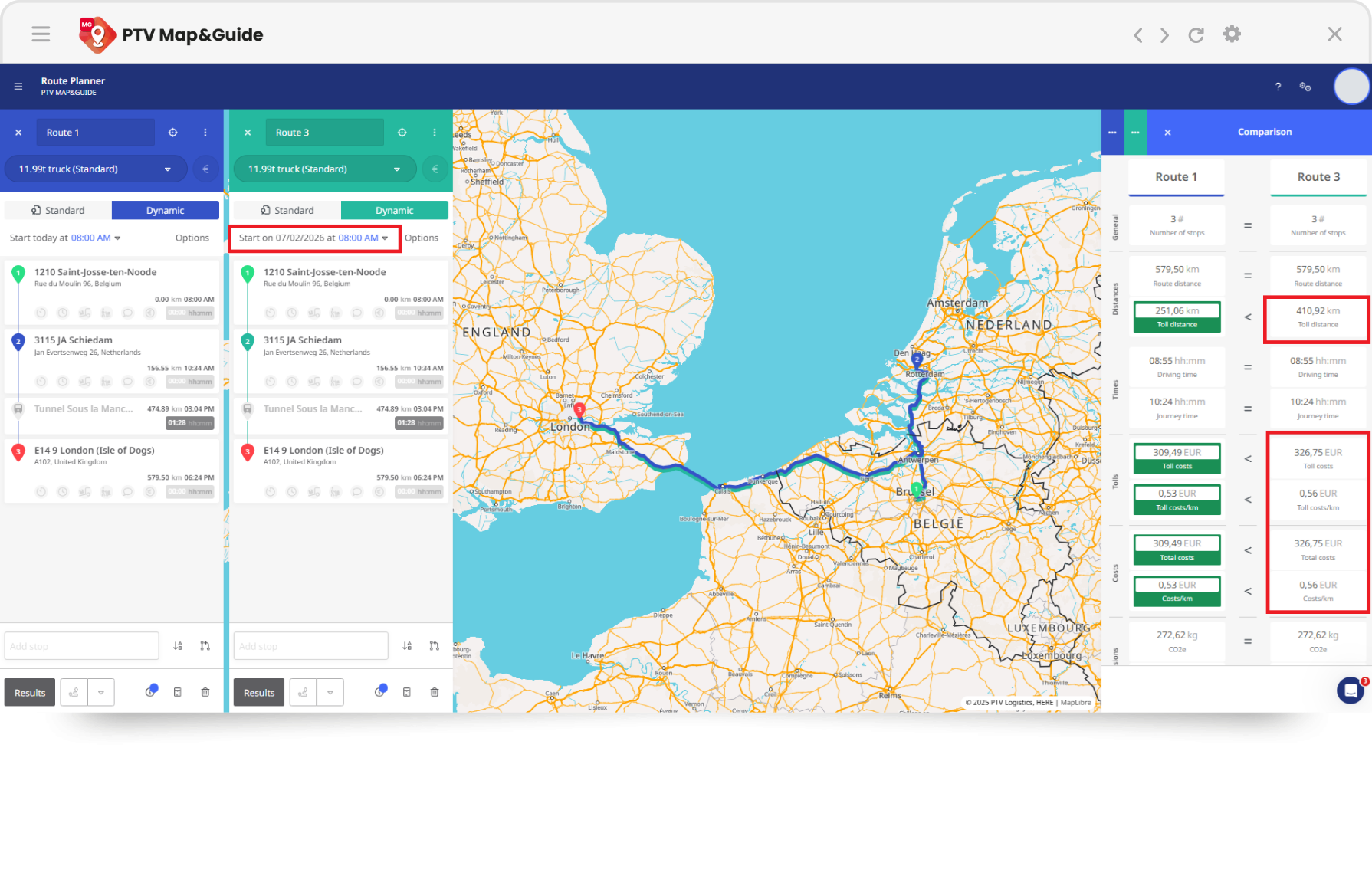It’s no secret that the logistics sector is one of the largest contributors to global carbon emissions, producing around one third of total CO2 globally. In many developed countries, it is the largest-emitting sector. Transport is the only sector where greenhouse gas emissions have increased over the last three decades, with around 27% of this coming from trucks. And demand is only set to grow. Overall freight activity from heavy and light commercial vehicles is predicted to grow to around 2bn ton-km by 2030, a 24% increase compared to 2015. Meanwhile, e-commerce sales are expected to continue rising, further increasing the demand for last-mile delivery.
All of this suggests carbon emissions from the logistics sector will only increase. But it doesn’t have to be this way. E-commerce doesn’t have to mean more traffic on the road. In fact, by increasing the number of online orders and consolidating deliveries, it can reduce the number of individual car trips to shops and urban centers. And if the wider retail and logistics sectors focus on finding efficiencies in the same way, they can begin to reduce their environmental impact, even as demand grows.
For this to happen, decisions need to be grounded in data and supported by technology. We caught up with the CEO of PTV Logistics, Steven De Schrijver, to get his perspective on what logistics companies should be doing to make their operations more sustainable, and how this might change as technology evolves.
What are the quick wins for companies to make their logistics more sustainable?
“The beauty of sustainability in logistics isn’t always about massive, expensive overhauls. There are genuinely quick wins. The biggest one, and it’s something we consistently see, is reducing empty miles. Our belief – the greenest km is the km not driven – is fundamental. Even a 5-10% reduction in empty running has a significant impact.
Beyond that, optimizing dock planning in conjunction with route optimization is a surprisingly effective combination. Often, companies optimize one without the other, which leads to inefficiencies.
Finally, a thorough review of current routes, identifying and eliminating unnecessary loops or detours, can yield immediate results. These are relatively low-hanging fruit that can be implemented quickly and provide a tangible return on investment.”
From a long-term strategy perspective, where should companies be investing most?
“Long-term, the biggest investment needs to be in data and the technology that leverages it. Data is the new fuel, as we say. Companies need to move beyond reactive planning and embrace predictive analytics. This isn’t just about knowing where a truck is right now, but anticipating future demand, potential disruptions and optimizing resource allocation – drivers, trucks, trailers – proactively.
Secondly, investing in flexible, scalable route optimization platforms is crucial. The future isn’t static; it’s dynamic. Platforms need to adapt to changing regulations, fuel prices and the increasing complexity of alternative fuels.
Finally – and this is often overlooked – is investing in the people who can interpret and act on that data. The planner role is evolving.”
If a company could do just one thing to make their logistics more sustainable, what would you suggest?
“If I had to pick just one, it would be to aggressively tackle empty miles. It’s the single biggest lever for immediate impact. It’s not just about finding return loads; it’s about fundamentally rethinking how routes are designed and how resources are allocated to minimize those empty runs. It requires a shift in mindset from simply moving goods to optimizing the entire logistics network.”
What technological advancement in the logistics sector has had the biggest impact on sustainability, and how?
“Without a doubt, the rise of real-time visibility software and the data they generate. Historically, logistics planning was based on limited information and often guesswork. Now, we have real-time data on vehicle location, traffic conditions, and even driver behavior. This allows for dynamic route adjustments, proactive problem-solving, and a level of precision that was previously unimaginable. The combination of real-time visibility and route optimization platforms is a game-changer, allowing us to move from reactive to predictive planning.”
How is the rise of electric vehicles and the use of alternative fuels changing route planning?
“It’s adding a significant layer of complexity, but also a huge opportunity. EVs and alternative fuels introduce constraints around charging schedules, range anxiety and infrastructure availability. Route planning now needs to incorporate charging stops, consider battery degradation and factor in the availability of charging stations. It’s not just about the shortest distance anymore; it’s about the most efficient route considering energy consumption and charging needs. We’re developing algorithms that specifically address these challenges, optimizing routes to minimize charging time and maximize vehicle utilization. It’s a complex puzzle, but one we’re actively solving.”
Is collaborative logistics becoming more common? If so, what challenges does it present for route planning?
“It’s slowly gaining traction, and we believe it’s essential for the future. The potential for efficiency gains through shared resources – trucks, trailers, even drivers – is enormous. However, it presents significant challenges. Data security is paramount. Companies are understandably hesitant to share sensitive information. Route planning becomes exponentially more complex when coordinating multiple fleets and ensuring compatibility. It’s about creating a trusted ecosystem where collaboration thrives.”
How can predictive analytics be used to improve sustainability?
“Predictive analytics is the key to unlocking significant sustainability gains. It allows us to anticipate demand fluctuations, identify potential bottlenecks, and optimize resource allocation before problems arise. For example, we can use historical data to predict traffic congestion and proactively adjust routes to avoid delays. We can also use it to optimize trailer utilization, minimizing the number of trips required. Ultimately, predictive analytics allows us to move from reactive problem-solving to proactive optimization, reducing fuel consumption, emissions, and overall environmental impact.”
You mentioned the evolving role of the logistics planner. Can you elaborate?
“Historically, planners were primarily focused on reacting to immediate needs. Now, they need to be data analysts, strategists, and problem-solvers. They need to be able to interpret complex data sets, identify trends and make informed decisions about route optimization, resource allocation, and risk mitigation. We’re seeing a shift towards planners who are comfortable using data visualization tools, understanding algorithms and collaborating with other departments. It’s a more demanding role, but also a more rewarding one.”
What’s the biggest hurdle preventing wider adoption of sustainable logistics practices?
“It’s a combination of factors. There’s a lack of awareness, a reluctance to invest in new technologies, and a short-term focus on cost savings. Sustainability often requires upfront investment, but the long-term benefits – reduced costs, improved efficiency and a positive brand image – far outweigh the initial expense. We need to shift the conversation from cost to value and demonstrate the tangible benefits of sustainable logistics practices.”

The logistics industry has the opportunity to challenge the idea that growth in demand and volume will inevitably lead to the same rate of growth in carbon emissions. By focusing on efficiency and taking an innovative approach to planning, whether that be by optimizing route design, blending transportation methods or sharing resources, there is potential to slow emissions without impacting customers and the bottom line. To achieve this there needs to be investment in data and technology.
But the good news, as Steven points out, is that the technology already exists and is only going to get better. To find out how much CO₂ your company could save with advanced route optimization and real-time visibility tools, get in touch.

